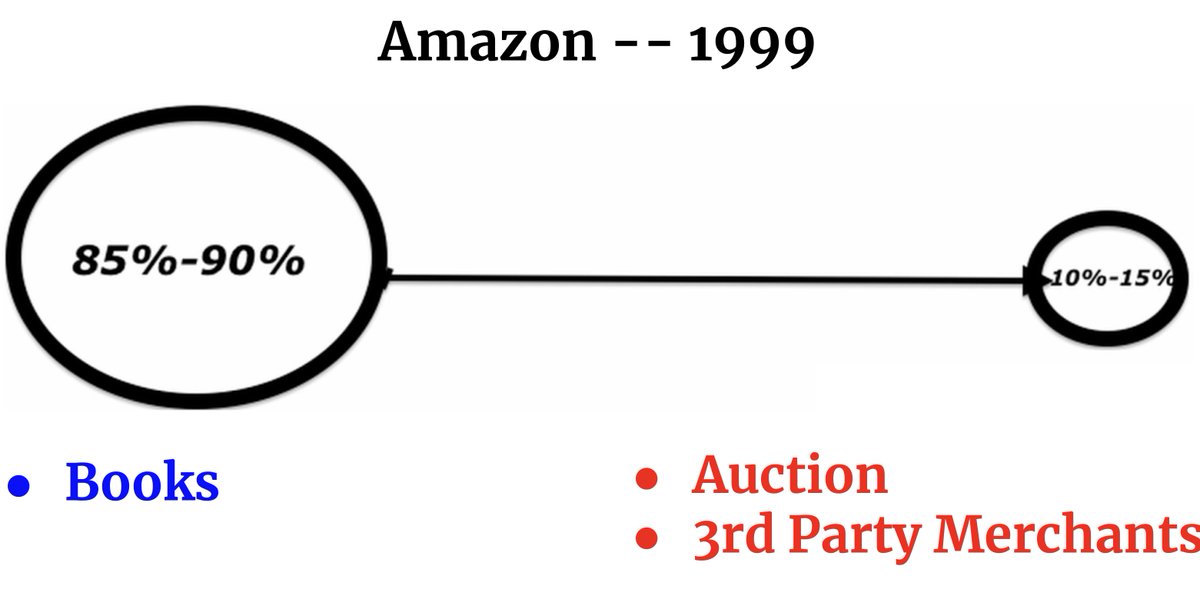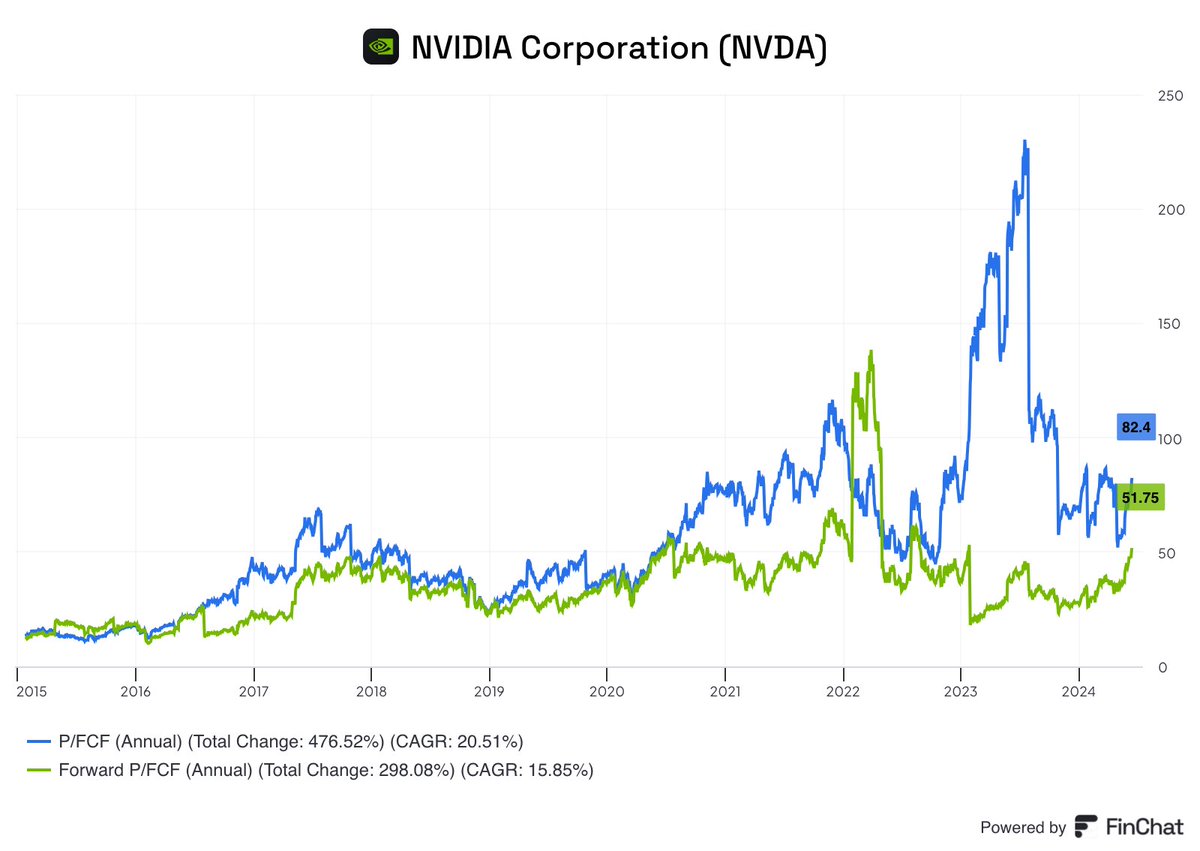Over the past decade, I've been blessed with:
✅27% annualized returns
📈That's roughly 1,000% total
One of the keys behind those results: Looking for something that's often ignored by analysts...⤵️
✅27% annualized returns
📈That's roughly 1,000% total
One of the keys behind those results: Looking for something that's often ignored by analysts...⤵️
OPTIONALITY
The practice of TESTING out a new product or service in an effort to fulfill its mission.
🔴If it doesn't work, it's no big deal -- it was just a test.
🟢If it does work, it's a game-changer.
Critically, the company already needs a wide-moat rev stream to count on
The practice of TESTING out a new product or service in an effort to fulfill its mission.
🔴If it doesn't work, it's no big deal -- it was just a test.
🟢If it does work, it's a game-changer.
Critically, the company already needs a wide-moat rev stream to count on

No company is a better example of this than AMAZON $AMZN
In 1999, books and music were the wide moat business. It decided to test:
🔴Amazon Auction (failed)
🟢3rd Party Merchants (huge success)
In 1999, books and music were the wide moat business. It decided to test:
🔴Amazon Auction (failed)
🟢3rd Party Merchants (huge success)

In the next decade, 3rd Party Merchants were so successful, that business line entered the left (wide-moat) side of the business.
Next, it tested:
🔴Fashion Retail (failed)
🟢AWS, Prime, Fulfillment (ENORMOUS success)
Next, it tested:
🔴Fashion Retail (failed)
🟢AWS, Prime, Fulfillment (ENORMOUS success)

Ten years later, those winners were no longer tests, they were wide-moat businesses.
But the innovation didn't stop there:
🔴Quisdi (failed)
🔴Fire Phone (failed)
🔴Amazon Wallet (failed)
🟢Original video content (succeeded)
But the innovation didn't stop there:
🔴Quisdi (failed)
🔴Fire Phone (failed)
🔴Amazon Wallet (failed)
🟢Original video content (succeeded)

The result of all of this:
A simple $10,000 investment at the company's IPO is worth almost $20 MILLION TODAY!
But Amazon isn't alone, there are others you can invest in today.
A simple $10,000 investment at the company's IPO is worth almost $20 MILLION TODAY!
But Amazon isn't alone, there are others you can invest in today.

@BrianFeroldi and I tackled this phenomenon in our recent video on OPTIONALITY.
We introduce
✅One small (~$11B) stock with lots of optionality
✅8 more stocks we're impressed with
✅How to find signs of optionality
We introduce
✅One small (~$11B) stock with lots of optionality
✅8 more stocks we're impressed with
✅How to find signs of optionality
We are busy making videos like this every week.
Why?
Because we want to spread financial wellness and help anyone lead a full, whole life (while not worrying too much about finances).
Our videos are completely free, and you can subscribe here:
youtube.com/brianferoldiyt…
Why?
Because we want to spread financial wellness and help anyone lead a full, whole life (while not worrying too much about finances).
Our videos are completely free, and you can subscribe here:
youtube.com/brianferoldiyt…
To review:
OPTIONALITY is the ability to *test* new products and services that fulfill one's mission.
If they fail, it's not a big deal
If they succeed, it's a game changer
And no one has done this better over the last 20 years than Amazon $AMZN
OPTIONALITY is the ability to *test* new products and services that fulfill one's mission.
If they fail, it's not a big deal
If they succeed, it's a game changer
And no one has done this better over the last 20 years than Amazon $AMZN
• • •
Missing some Tweet in this thread? You can try to
force a refresh
















